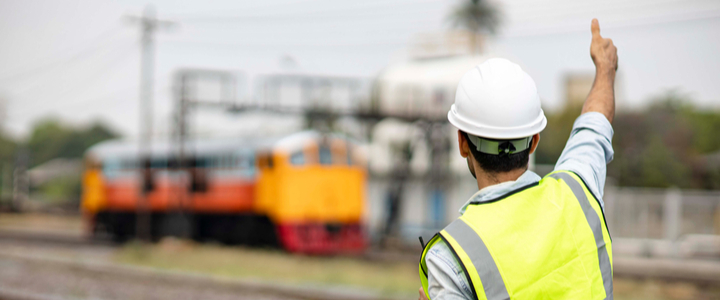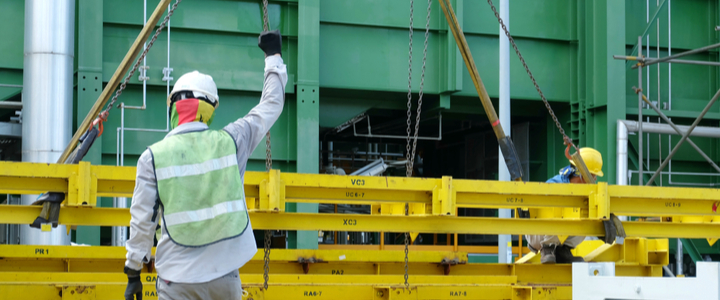Construction sites are busy, bustling environments where heavy machinery and equipment are constantly in motion. In these environments, verbal communication alone may not always be sufficient or even possible due to loud noise levels or distance. That’s where hand signals come into play. They provide a universal language that enables heavy equipmentoperators to communicate effectively with ground workers, spotters, and other team members.
The Importance of Construction Hand Signals
Mastering heavy equipment and construction hand signals is essential for maintaining a safe and efficient construction site. Clear and effective communication between equipment operators and ground workers can prevent accidents, injuries, and costly mistakes.
Commonly Used Heavy Equipment Hand Signals
While hand signals may vary slightly depending on the region or specific construction site, there are several universally recognized signals that are essential for safe operations. Here is the best guide for you if you’re looking for a list of the most common hand signals to use in construction site safety.
1. Stop Signals
Stop signals are critical hand gestures used to instruct crane operators to halt all movement immediately for safety reasons.
STOP – Lift your arm straight to the side with your palm down, then swing your arm to signal the crane operator to stop.
EMERGENCY STOP – Extend both hands straight out with palms flat, then swing them back and forth. For a complete stop, clasp your hands and place them at your waist.
2. Boom Signals
Boom signals are essential hand gestures that instruct crane operators on specific maneuvers, such as raising, lowering, or extending the crane boom.
RAISE BOOM – Extend your arm outward, close your fist, and point your thumb upwards to signal raising the crane boom.

SWING BOOM – Extend your arm outward horizontally and use your index finger to point in the desired direction to signal the crane operator where to swing.
LOWER BOOM – Hold your hand horizontally with a closed fist and point your thumb downward to instruct the operator to lower the crane boom.

EXTEND BOOM – Hold your hands away from your waist with thumbs out to indicate extending the crane boom.
3. Loader Hand Signals
This signal is just as important as the other signals. It tells the operator what to do with the load once it has officially been lifted. There are two signals to keep in mind when teaching your team.
HOIST LOAD – Extend arms upward with fists, then use your index finger to make small circles in the air to signal raising the load.
LOWER LOAD – Extend arm horizontally with a fist and make small circles with your index finger to signal lowering the load.
4. Travel Signals
Moving a crane can be dangerous, and someone needs to direct the operator on where to go. There are a few basic signals your team should be aware of and what they mean.

MOBILE CRANES – Extend your arms outward with hands pointed upward, then push in the direction the crane should move to signal the operator.
TOWER CRANES – Bend your arms upward at the elbow with thumbs pointing in the direction of travel to direct the tower crane.
CRAWLER CRANES (BOTH TRACKS) – Make fists with hands in front of your waist and rotate them:
- Rotating towards your body signals the crane to move forward.
- Rotating away from your body signals the crane to move backward.
CRAWLER CRANES (ONE TRACK) – Use one fist in front of your body while raising the other fist in the air to indicate the direction for a crawler crane with one track.
5. Speed Signals
Speed signals are important hand gestures that allow signal persons to control the speed of crane operations.
SLOW DOWN – Place one hand over the hand giving the action signal to instruct the operator to slow down. This critical signal enhances safety on the job site.
Benefits of Universal Construction Hand Signals Training
OSHA hand signals for construction equipment are a good way to ensure safety on a site and among your construction crew. It allows your team to communicate from a distance without words and can promote safety. There are some universal hand signals that most people will know and understand. This is also a way for people who speak different languages to have a way to communicate.
Safety Tips for Using Hand Signals
- Training: Ensure that all personnel, including equipment operators and ground workers, receive proper safety training on construction hand signals.
- Clarity: Use clear and deliberate hand movements to avoid confusion or misinterpretation.
- Visibility: Position yourself where the equipment operator can easily see your hand signals, and ensure proper lighting conditions if signaling at night.
- Consistency: Establish consistent hand signals within your team to maintain uniformity and avoid confusion.
- Alertness: Always maintain situational awareness and be prepared to react quickly to changing conditions or unexpected hazards.
Remember, when it comes to heavy equipment and construction, communication is key, and hand signals are the language that keeps everyone on the same page and out of harm’s way. Stay safe, stay informed, and keep building with confidence.
Safety By Design Values Construction Site Safety
Ready to enhance safety on your construction site? Reach out to Safety By Design today to learn more about our safety training programs, including heavy equipment and construction hand signals. Together, let’s build a safer work site.
Contact us online to start teaching your crew about heavy equipment operator training now!




